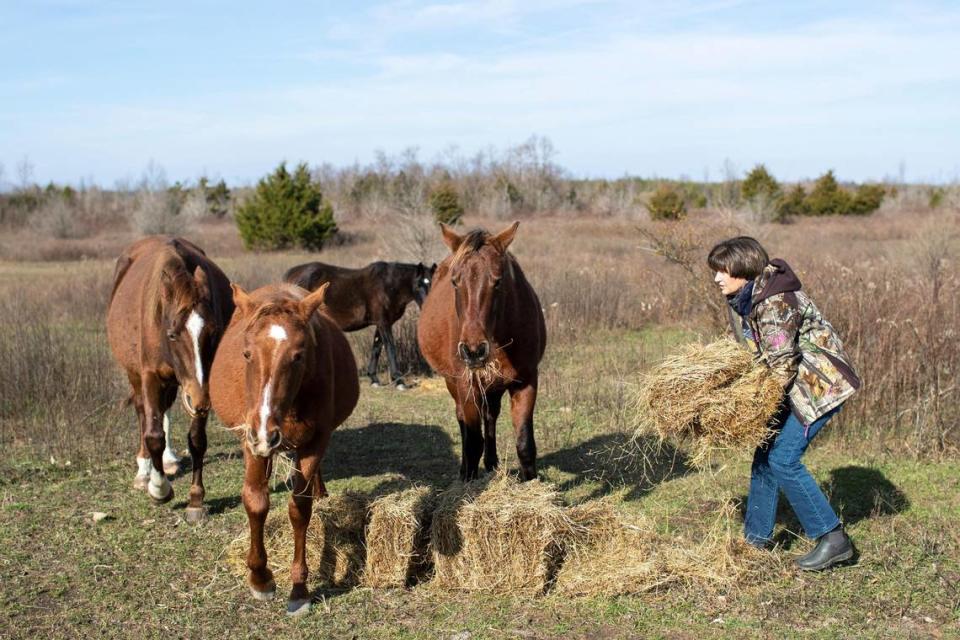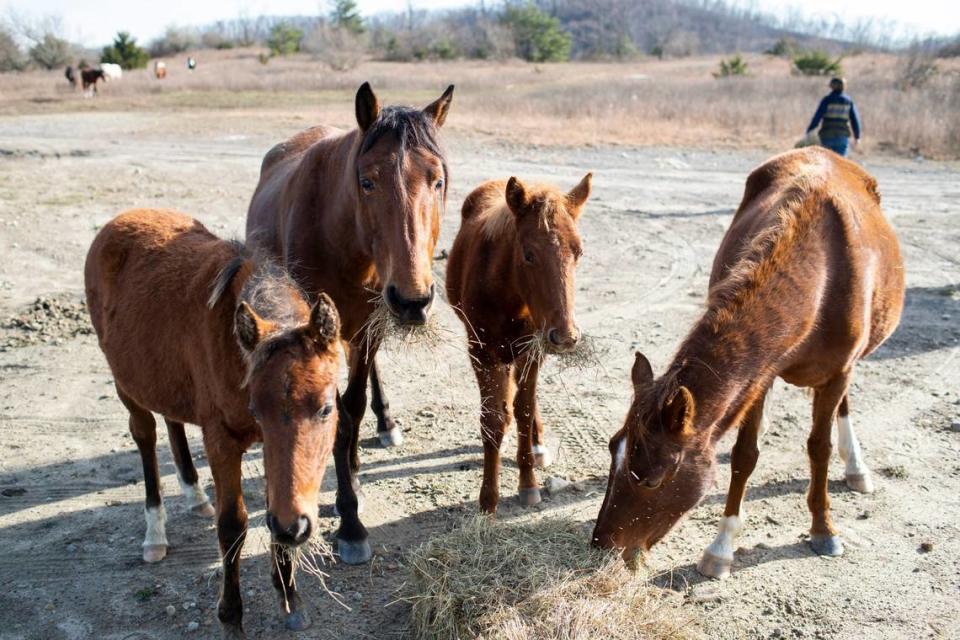Eastern Ky. flood brought hardship for horse, animal owners. Here’s how people have helped
Much like it destroyed homes, this past summer’s deadly flooding across multiple southeastern Kentucky counties also washed away barns and valuable supplies for horse owners, like hay.
The Appalachian Horse Project, in conjunction with the Kentucky Horse Council, has been able to set up near monthly drop points for small, square bales of hay where those who needed it could come and get it, said Sarah Coleman, the executive director of the Kentucky Horse Council.
The council pays for the hay but coordinates with the Appalachian Horse Project’s Bernice Amburgey, who is a resident of Knott County, a county hit hard by the flood.
“It was really helpful for me to call (Amburgey) and say, ‘Give me a general number of horses, how many lost all of their winter hay as well,’” Coleman said.
According to Amburgey, they’re planning on doing at least one more hay giveaway in February.
But hay wasn’t the only thing horse owners in the flood-affected area needed. The large influx of water brought on by the floods also brought on a potential boom in the populations of mosquitoes, ticks and other disease-causing insects, putting horses in the area at increased risk for disease.

Fernanda Camargo, an equine extension specialist with the University of Kentucky and a member of the Appalachian Horse Project’s board, was instrumental in securing vaccines to help protect the horses in the area.
Someone who had lost nearly everything in the flood would find it “super devastating” if their horse became ill a month later, Camargo said. Several companies that make vaccines, equestrian and other horse-care equipment donated products that could be distributed.
“We recruited several veterinarians that donated their time and their gas money to go there and travel around and get to these houses (to speak with horse owners),” Camargo said. “We vaccinated close to 300 horses in the area.”
Horse owners were also given bottles of fly spray and others received products to treat wounds.
“Some of (the horses) had cuts from trying to run away from the floods or being tangled by wire,” Camargo said. “It was just a bad thing.”

Horses weren’t the only animals affected by the flooding. In December, the Kentucky River Regional Animal Shelter in Hazard publicly announced that it had its highest population in over a decade and held a candlelight vigil to pray for relief.
Tammy Noble, the shelter’s president, told WTVQ at the time the high population was a result of the lingering economic effects of the pandemic as well as the July flooding in the region. The shelter serves Perry, Letcher, Breathitt and Knott counties, the four hit hardest by the flood.
At the time, the demand for animal intake at the shelter had rapidly increased, pushing it to take in almost double the typical intake capacity of 175 animals, Noble said.
“We are trying in every way to control our intake to prevent being forced to euthanize for space,” the shelter said in a January Facebook post. “We are only asking for you to do these simple steps to help saves lives. In one day last week we had 30 animals brought into the shelter in 17 minutes.”
In the same post, the shelter said it was “begging” for short-term fosters. The shelter’s website, krras-fund.org, contains information on how to donate and also has applications for adopting or fostering animals in the shelter.

